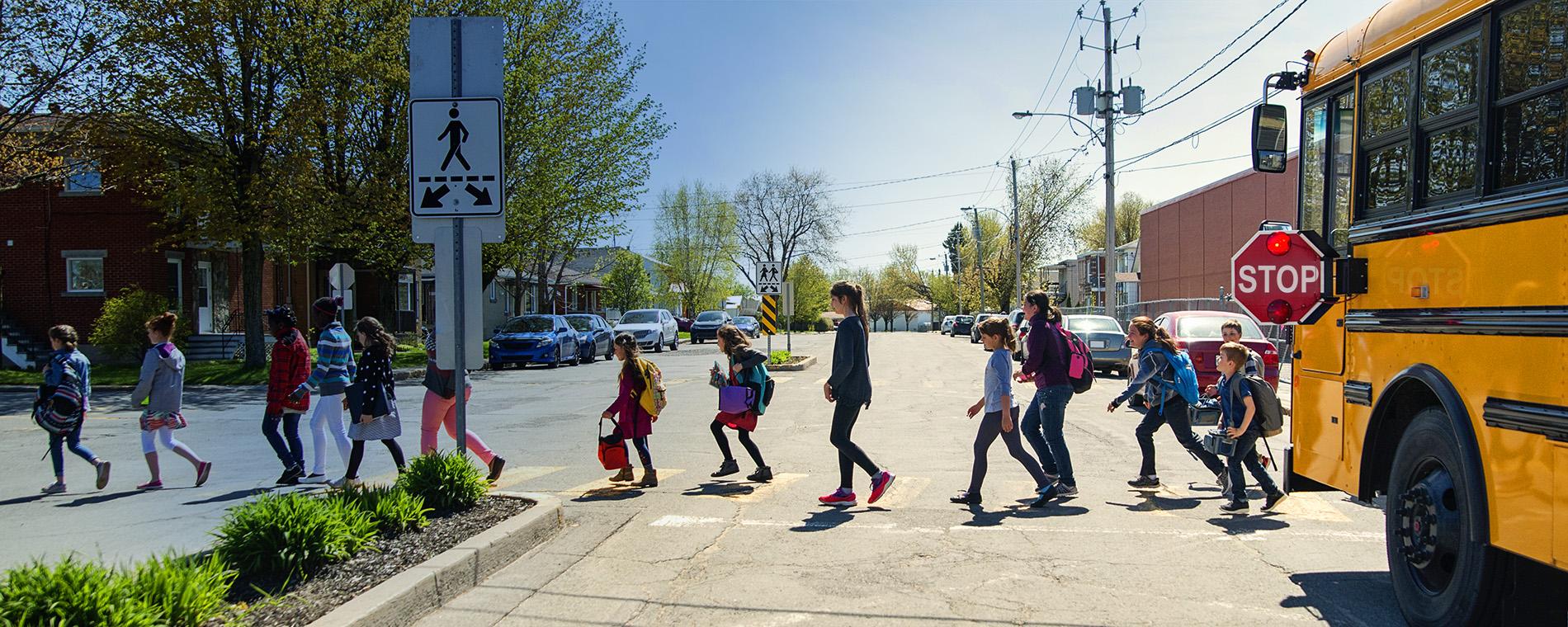
ELECTRIC INSURANCE
Safe Driving Around School Buses and Zones
Summer is largely over, and we’re on to “stuck behind a school bus” season. Parents may be relieved, but drivers will be contending with the annual reset of morning and afternoon commuting habits caused by renewed traffic congestion.
Top tips to avoid accidents
A National Highway Traffic Safety Administration study found that more than 260 children were involved in fatal school transportation accidents during a nine-year study. Here’s what you should know about the most common cause of those accidents and how to avoid them.
- School buses move slowly and make frequent stops – obliging you to go even more slowly and stop just as often as they do. It’s frustrating, but make sure you don’t pass the bus while it is stopped with the “STOP” sign extended and/or showing flashing red lights. It’s illegal to do so in all states for a very good reason: A recent study showed that 75% of student accident fatalities involving a school bus happened when the student was struck by a vehicle passing the stopped bus. There are significant penalties for breaking this law: fines up to $10,000, possible suspension of your license, jail time, and a possible felony conviction.
- Children often move unpredictably and may dart out in front of you near a stopped bus. Data shows that most fatal accidents occur within 10 feet of the school bus. Keep at least 20 feet back when the bus is stopped – it’s even the law in some states.
- Most accidents near bus stops happen when kids cross the street to catch the bus. Distracted drivers frequently don’t notice small children crossing against the traffic, and the children are so intent on getting to the bus stop that they are not aware of the traffic. Make a point of having no distractions in your vehicle when you’re near bus stops or school zones.
- Distraction is an issue for the kids, too. About 12% of middle-school and 20% of high-school students cross the street while texting. They may step blindly into traffic while engrossed with their phones. A good rule of thumb is to stay alert and keep your speed down. A pedestrian hit by a vehicle going 25 mph has 66% less chance of being fatally injured than one who is hit by a vehicle going 35 mph.
- About 13% of kids walk or ride their bike to school. Many do not have the experience to safely judge traffic and may be so focused on their destination that they aren’t thinking of their surroundings. Be especially cautious when backing up.
A slowed commute is exasperating, and we sympathize. You can use these tips to help ensure that it’s also uneventful.
Plan for the unexpected
While you can’t control other people, you can control your exposure to the risk of loss. Check your current coverage and think about the costs that you could incur if you accidentally hit and injure a pedestrian. Then talk to an insurance professional about what coverage limits would be best for your situation.
Contact us
Our Risk Coaches™ are licensed insurance professionals who are trained to look at coverage from your perspective.* They’re glad to help you navigate the often-perplexing world of insurance coverage. Call us at 800.342.5342, Monday through Friday, from 8:00 a.m. to 8:00 p.m. ET.


